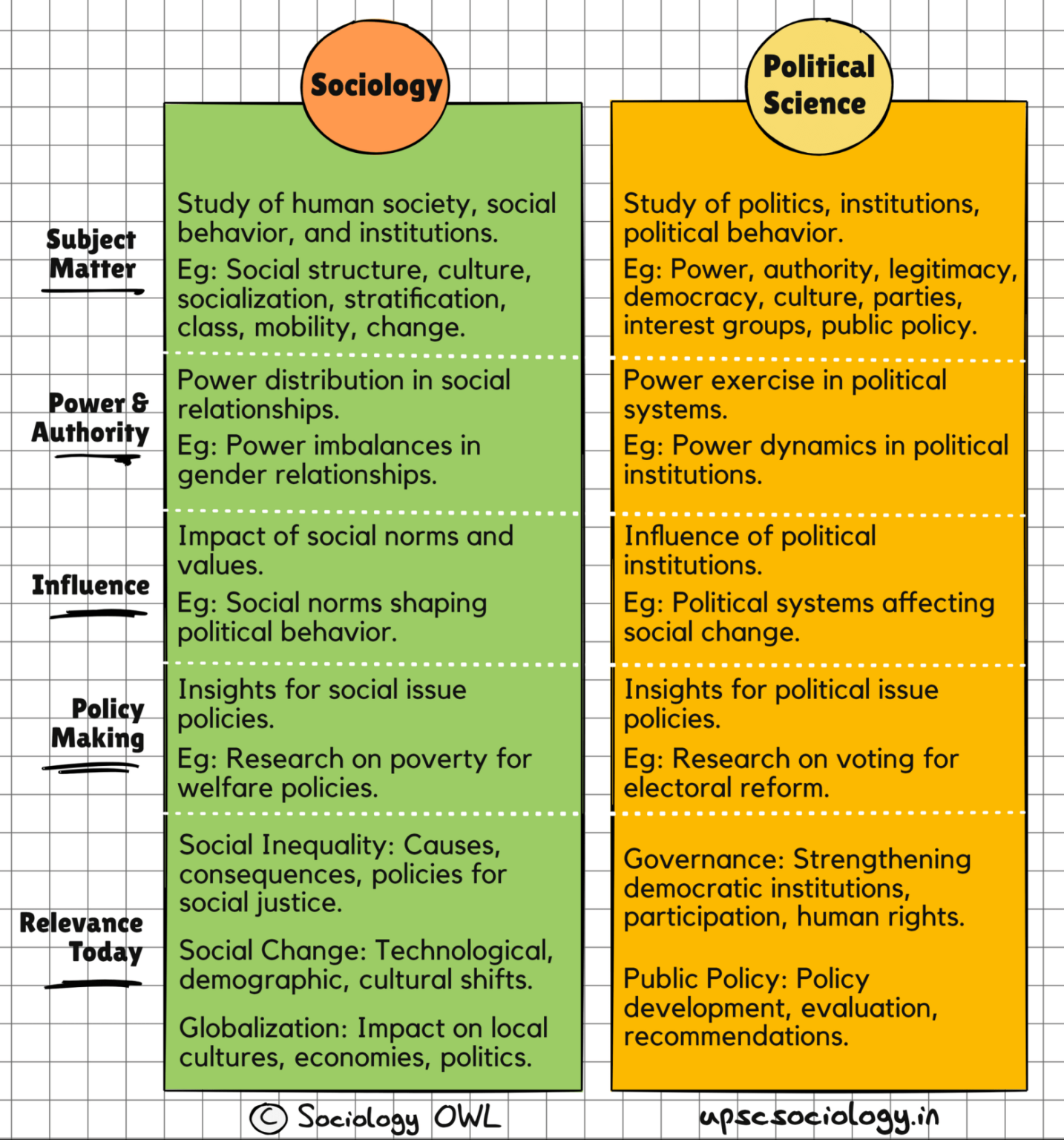Explain Max Weber’s theory of social stratification. How does Weber’s idea of class differ from that of Marx?
Model Answers
Q: Explain Max Weber’s theory of social stratification. How does Weber’s idea of class differ from that of Marx?
Question asked in UPSC Sociology 2023 Paper 1. Download our app for last 20 year question with model answers.
Model Answer:
Max Weber Theory of Social Stratification
Max Weber’s theory of social stratification offers a multidimensional approach to understanding social inequality, expanding on Karl Marx’s primarily economic-based analysis. Weber’s perspective provides a more nuanced view of how society is stratified, incorporating additional factors beyond economic class.
Weber’s theory of social stratification consists of three main components:
1. Class: Similar to Marx, Weber recognizes the importance of economic factors in social stratification. However, he broadens the concept to include:
– Property ownership
– Skills and education
– Market position
Weber argues that an individual’s “life chances” are significantly influenced by their class position, which determines their access to resources and opportunities.
2. Status: Weber introduces the concept of status groups, which are based on prestige, honor, and social esteem. Unlike class, status is not solely determined by economic factors. It can be influenced by:
– Lifestyle
– Education
– Occupation
– Family background
Status groups can exist independently of class, allowing for a more complex understanding of social hierarchy.
3. Party: This dimension refers to political power and influence. Weber argues that individuals or groups can gain power through:
– Political affiliations
– Organizational memberships
– Social networks
Party power can be used to further one’s interests and affect social stratification.
Key differences between Weber’s and Marx’s ideas of class:
1. Multidimensionality: While Marx focused primarily on economic relations, Weber’s approach incorporates multiple dimensions (class, status, and party), allowing for a more comprehensive analysis of social inequality.
2. Non-economic factors: Weber emphasizes the importance of non-economic factors like prestige and political power in shaping social stratification, whereas Marx saw these as primarily derived from economic relations.
3. Middle class: Weber recognizes the significance of the middle class and its potential for social mobility, which Marx’s binary class model (bourgeoisie vs. proletariat) did not adequately address.
4. Conflict vs. Complexity: Marx viewed class conflict as the primary driver of social change, while Weber’s theory allows for a more complex interplay between various dimensions of stratification.
In conclusion, Weber’s theory of social stratification provides a more nuanced and multifaceted understanding of social inequality compared to Marx’s economic determinism. By incorporating status and party alongside class, Weber offers a framework that better captures the complexities of modern societies and their hierarchical structures.
More Questions:
Download our app for UPSC Sociology Optional - Syllabus, NCERT Books, IGNOU Books, Past Paper with Model Answers, Topper Notes & Answer Sheet.


